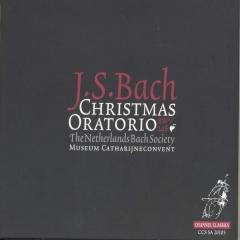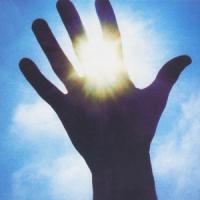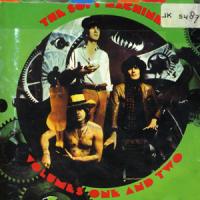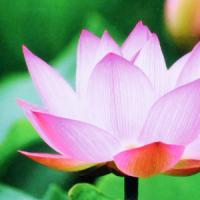Before the Christmas of 1734-1735, Bach wrote six cantatas, using the previously written secular cantatas 'Hercules auf des Scheidewege', 'Tönet ihr Pauken' & 'Preise dein Glücke, gesegnetes Sachsen'. Although the cantatas were performed separately on the different Christmas days (Christmas Day, Christmas Day and Third Day, New Year's Day, the First Sunday after New Year & Epiphany), Bach
… regarded the cycle as one coherent whole, entitled Christmas Oratorio. The music has several highlights, including the festive opening chorus, the sonorous shepherd's shells of the Sinfonia with which the Second Cantata begins, the moving cradle song 'Schlafe, mein Liebster', the mysterious bass ariosos in the Fourth Cantata for New Year's Day, the echo-aria of the same cantata (beautifully sung by Johannette Zomer), etc .. This beautiful performance by the Netherlands Bach Society, conducted by Jos van Veldhoven, contains a beautifully designed booklet with a large number of reproductions of the Museum Catharijneconvent Utrecht. Also very beautiful is the anticipatory cover that one of the violinists makes in his last theme insertion of the aria 'Ich will nur dir zu Ehren leben', as if Bach (as Hans Brandts Buys once assumed) had gypsy blood in his veins. (HJ) Also very beautiful is the anticipatory cover that one of the violinists makes in his last theme insertion of the aria 'Ich will nur dir zu Ehren leben', as if Bach (as Hans Brandts Buys once assumed) had gypsy blood in his veins. (HJ) Also very beautiful is the anticipatory cover that one of the violinists makes in his last theme insertion of the aria 'Ich will nur dir zu Ehren leben', as if Bach (as Hans Brandts Buys once assumed) had gypsy blood in his veins. (HJ)more







